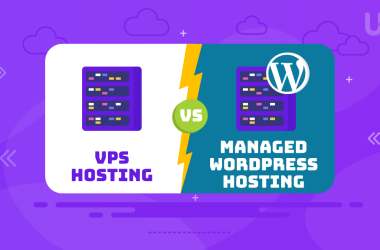Among all major technologies that businesses from small to large scale use in today’s digital world, cloud computing offers flexibility and scalability for different IT requirements. The three primary cloud computing service models include IaaS vs PaaS vs SaaS. Every model provides various services, enabling options targeted at varied needs and levels of control. Whereas IaaS provides basic infrastructure resources, PaaS allows building and deploying applications by developers without requiring the developer to manage the underlying infrastructure.
In this blog, we will discuss the major differences between IaaS vs PaaS vs SaaS models to understand which best fits your business. These cloud service models have unique advantages, from infrastructure control to software accessibility. We will break down their features, benefits, and use cases for selecting the right Cloud to simplify the path to optimal efficiency and great scalability for your business.
What Is IaaS?
IaaS (Infrastructure as a Service) provides raw resources for cloud computing, giving a company virtualized hardware consisting of servers, cloud storage, and networking. The model allows enterprises to rent infrastructure from any cloud service provider rather than purchase and manage physical servers. It is also much more scalable, allowing companies to scale up or down resources depending on demand. Hence, it is highly suitable for growing companies or those whose workloads often fluctuate.
In IaaS, the user controls applications, data, runtime, middleware, and operating systems, while the cloud provider is responsible for physical servers and networking- that is, infrastructural parts. While this model is a good fit for those organizations that require flexibility and control, it is good for organizations that want to avoid considerable capital expenditure on hardware. Major IaaS providers are AWS, Microsoft Azure, and Google Cloud. This will allow one to pay more attention to core goals and increase productivity by reducing the efforts required for upkeep through infrastructure management outsourcing.
What is PaaS?
PaaS (Platform-as-a-service) provides a cloud with everything one needs to create, test, and deploy applications without concerns at the infrastructure level. Here, it is taken as a task for the cloud provider to handle virtual private servers, storage, networking, and the operating system. The only thing the user needs to do is concentrate on developing the application. Such a model befits teams that want to shorten development cycles or reduce hardware or software update complexities.
PaaS provides pre-built development tools, libraries, and infrastructure, making application development easy. It becomes all the more useful while working in teams or frequently redeploying software. Because of this reason, PaaS providers like Google App Engine, Microsoft Azure App Service, and Heroku have gained so much popularity. Using PaaS, developers can innovate faster, unleash their team’s productivity, and rapidly scale applications. It’s a solution targeted at businesses where streamlined development is achieved without the headache of infrastructure management and permits a sharper focus on core business objectives.
What is SaaS?

SaaS (Software-as-a-service) is a cloud software delivery model designed to deliver fully managed applications over the Internet to the end-user. Compared to IaaS and PaaS, SaaS requires very little setup and management on the user’s side, as the cloud provider hosts, maintains, and upgrades software. Users only need to access an application from a web browser or a dedicated client without requiring local installations and server maintenance. It is this ease of use and accessibility that made SaaS marketing popular both among businesses and individuals.
Common SaaS applications include Salesforce for CRM, Slack for collaboration, and Google Workspace for productivity. SaaS allows an organization to deploy tools in minutes without concern about configuration, security patching, or scaling. By leveraging SaaS, companies can cut IT costs, giving them greater flexibility with updated, secure applications. This is a very attractive model as companies strive for greater efficiency and economy in software use.
IaaS vs PaaS vs SaaS
| Feature | IaaS | PaaS | SaaS |
| Definition | This provides virtualized infrastructure: servers, storage, and all networking resources. | Provides a platform for developers to create, test, and deploy applications. | Provides fully managed software applications over the Internet. |
| User Control | High control over applications, data, middleware, and operating systems. | Control over applications and data; infrastructure and OS managed by the provider. | Minimal control; users manage application settings only. |
| Maintenance | The user keeps OS, applications, and data current; the provider manages infrastructure. | Provider maintains infrastructure and OS; users focus on app development. | Provider fully manages the application, updates, and maintenance. |
| Scalability | Highly scalable, based on resource needs; ideal for the dynamic workload. | Scalable for development needs, with resources allocated as needed. | Scalability depends on the application and provider’s capabilities. |
| Common Providers | AWS, Microsoft Azure, Google Cloud. | Google App Engine, Microsoft Azure App Service, Heroku. | Salesforce, Google Workspace, Slack. |
| Best For | Businesses need flexible, scalable infrastructure with control. | Developers focused on app deployment without infrastructure concerns. | End-users requiring easy-to-access software without technical setup. |
Boost Your Cloud Infrastructure with NVMe VPS!
Curious about the best hosting solutions in the IaaS vs PaaS vs SaaS debate? With UltaHost’s NVMe VPS Hosting, you get the high-performance speed of NVMe storage paired with the control and flexibility of IaaS—all without the hassle.
Key Benefits Overview
IaaS
- Cost Efficiency: It reduces capital expenditure by eliminating the need for physical infrastructure.
- Scalability: This will easily provide the resources required, thus supporting the business growth.
- Control: Provides huge control of the applications, data encryption, and OS configurations.
PaaS
- Faster Development: Saves time in other developments because tools and frameworks are already prepared.
- Less Complexity: It also minimizes the task of managing the underlying infrastructure, freeing the developer to focus on more important things.
- Team Collaboration: Facilitates powerful teams collaborating in one common development environment.
SaaS
- Accessibility: How accessible applications are to any device connected to the internet.
- Automatic Updates: Software updates are the providers’ headache. Therefore, the users will be automatically updated to the current features.
- Cost Effective: Minimizes the need for managing in-house IT, and decreases operational costs.
Common Use Cases
IaaS
- Web Hosting: Hosting of websites, disposable applications, and scalable infrastructure on-demand.
- Data Storage: Offers flexible and secure means of storing ever-multiplying data.
- Backup and Recovery: Provides reliable options for disaster recovery in protecting data.
PaaS
- Application Development: Allows creation, testing, and application deployment without infrastructure management.
- API Development: Offers creation and integration of Application Programming Interfaces in a controlled environment.
- Database Management: This will go a long way in easily setting up and managing application databases.
SaaS
- Collaboration Tools: A team can collaborate using collaboration platforms like Slack.
- Customer Relationship Management (CRM): CRM software develops consistency for the customer database, nurturing such data and improving the interaction through tools like Salesforce.
- Email and Office Suites: These are some of the most important productivity applications for business, including Google Workspace and Microsoft 365.
Choosing the Right One
The difference between IaaS, PaaS, and SaaS are based on your organization’s needs, technical capabilities, and level of control. IaaS is ideal for businesses with technical know-how in managing shared virtual servers and operating systems for flexibility, scalability, and control over infrastructure. PaaS offers the right environment with essential tools and frames for developers who wish to focus on application development without getting into the hassle of infrastructure management.
On the other hand, SaaS suits organizations needing fully managed applications with minimal setup. It guarantees ease of access and cost efficiency for common software needs. Your assessment of your team’s competence, the complexity of your projects, and some specific operational objectives will drive you to choose a model that perfectly corresponds to your business strategy.
Conclusion
Understanding the differences between IaaS vs PaaS vs SaaS empowers you to choose the most appropriate cloud service model for your business. IaaS offers full infrastructure control for organizations with the technical resources to handle more intricate settings. In contrast, PaaS offers a soothing environment wherein developers can exclusively concern themselves with writing application code, freeing them from infrastructure management concerns. SaaS, also known as software-as-a-service, was designed to make it easy to use. It’s a complete software solution provided and managed by suppliers, ideal for companies with minimal overhead but highly accessible applications.
UltaHost’s Premium Email Hosting offers secure, fully managed email services for businesses seeking reliable SaaS solutions. These solutions are perfect for seamless communication without IT hassles.
FAQ
How does IaaS differ from more traditional hosting?
IaaS provides scalable, on-demand infrastructure, while traditional hosting typically has fixed resources and is less flexible.
Why would a business choose PaaS over IaaS?
PaaS can be selected by organizations that develop apps not to be concerned with managing infrastructures but rather focus their attention on building and deploying applications.
Is SaaS only applicable to small business companies?
Well, not really, for it is just as accessible and cost-effective to a firm of any size, from a start-up to a large corporation.
Is it possible to customize applications with SaaS?
SaaS usually allows limited customizations, but some vendors allow configuration to meet specific needs.
What fundamental skills do you need to apply IaaS effectively?
IaaS requires technical expertise to administer virtual servers, networking, and operating systems, making it appropriate for IT teams.
How secure is PaaS when performing application development?
While most PaaS providers incorporate a number of security features by default, the user is responsible for securing their applications and data.
What would be a typical disadvantage of using SaaS?
For SaaS, one may experience limited control over data storage and software updates since one relies on the provider.










